During the 18th and 19th centuries, the construction of neighbors’ courtyards proliferated throughout Seville, places that gathered houses from several families who could also create their own community. The Triana neighborhood is the one with the most neighbors’ courtyards, so exploring them is an activity that serves to review a good part of its history while enjoying the beauty of these spaces.
Some of these picturesque buildings that marked the neighborhood’s appearance are still preserved, allowing us to depict the neighborly coexistence of the time. However, it’s essential to remember that neighbors’ courtyards were the vivid image of poverty and the extreme conditions of the past, where the way to coexist and survive was by sharing everything they had.
They were hotbeds of diseases since they lacked basic sanitary conditions in most cases, although they “represented fair schools of citizenship, offering evidence of solidarity and humanity”.
In neighbors’ courtyards, sorrows and joys were shared, with women playing a predominant role, as they were responsible for family care and the environment in those times. Triana is the Seville neighborhood where the largest number of neighbors’ courtyards survive, and it is the best urban interpretation center to understand how these buildings represented spaces where survival was sometimes miraculous, in the narrow alcoves and different rooms. However, with their improvements and facilities today, they evoke the model of coexistence and neighborliness far from the cold spaces of modern housing.
Examples of these are the Corral de Herrera, the Casa de la Virgen del Rocío, the Cerca Hermosa, the Corral Largo, the Corral de los Corchos, the Casa Quemada, the Corral de las Flores, the Patio de Quidello, the Corral de los Fideos, and the Hotel Triana.
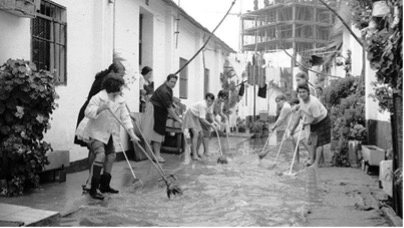
Herrera Courtyard, Pagés del Corro Street, 111
It is the most modern of all, built in 1909 to provide shelter for 15 families and over a hundred people. It was acquired in 1986 and became private property, later restored in 1995, as indicated by a large tile at the entrance. It was adapted for independent housing with all modern amenities while preserving its traditional appearance. The center of the courtyard is dominated by a narrow light patio decorated in the Sevillian style with ceramics, flowerpots, wrought-iron lanterns, posters of popular festivals, and two ceramic altarpieces that provide divine protection to the residents. These altarpieces feature Santa Rosa de Lima on the ground floor and Nuestro Señor del Gran Poder on the upper floor.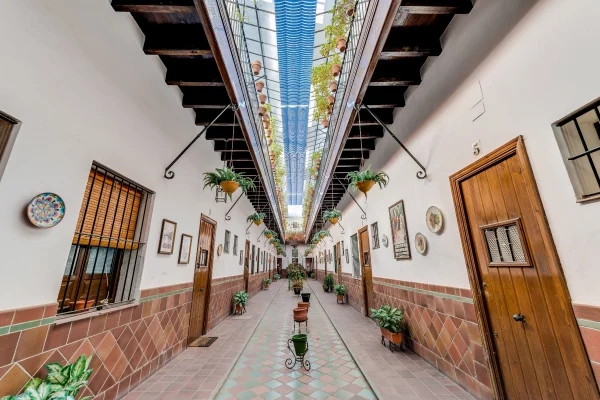
House of the Virgin of the Rocío, Pagés del Corro Street, 103
On the other hand, there is the House of the Virgin of the Rocío, named after a Virgin altarpiece that has been at its entrance since 1915. Dating back to the 19th century, it is one of the smallest courtyards in Triana. However, it used to accommodate up to 18 families, but after renovation works carried out in 2002, the number of housing units in the courtyard was reduced to eleven in order to provide better living conditions.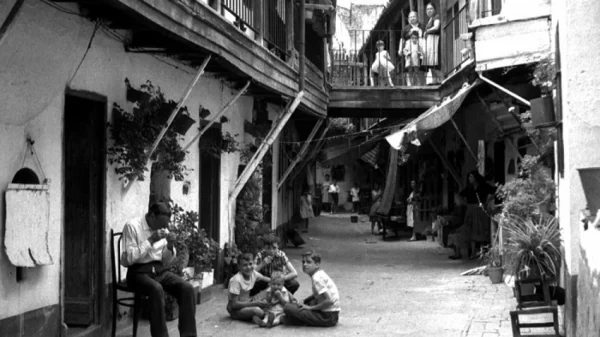
La Cerca Hermosa (Alfarería, 32)
This is one of the largest courtyards in the Triana neighborhood. Its internal structure is not uniform, but it consists of a series of independent buildings, one or two stories high, mostly built in the 19th and early 20th centuries, although some are quite recent. Unlike other courtyards, most of the residents here are property owners, and they are known for their interest in maintaining the courtyard in good condition with beautiful decoration, which has earned them awards and recognition.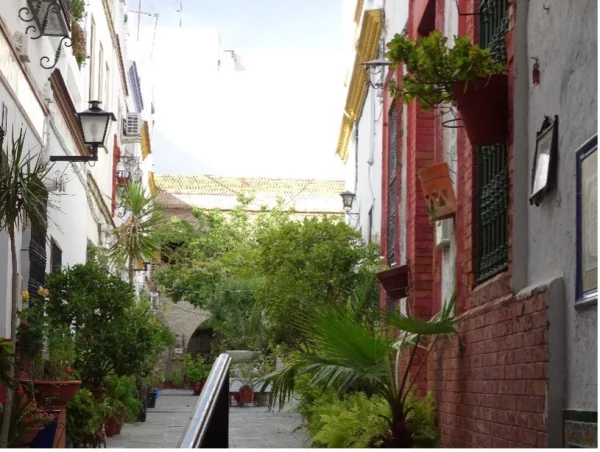
El Corral Largo (Alfarería, 85)
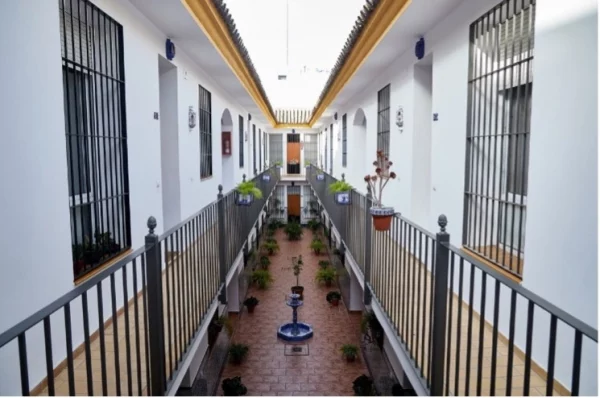
Two-story corral rebuilt in the late 20th century on a narrow plot of land with a long courtyard.
Corral de Los Corchos (Alfarería, 138)
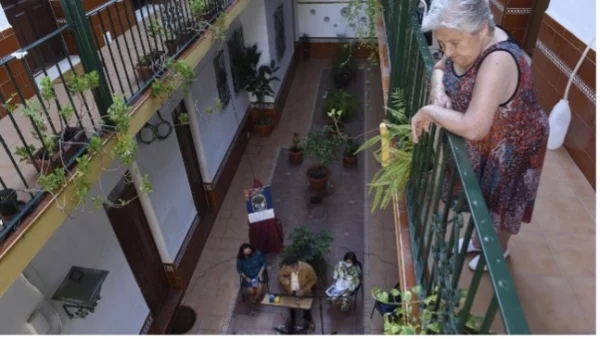
A large two-story building with a rooftop constructed around 1940. Inside, it features a courtyard with a central fountain and wall lanterns. This property has received ongoing maintenance, and its residents have shown a significant commitment to maintaining habitable conditions.
It is called “El Corral de Los Corchos” because most of its residents used to work at the cork factory that was formerly located in La Cartuja.
La Casa Quemada (Pureza, 72)
Detail of the fountain at Corral La Casa Quemada.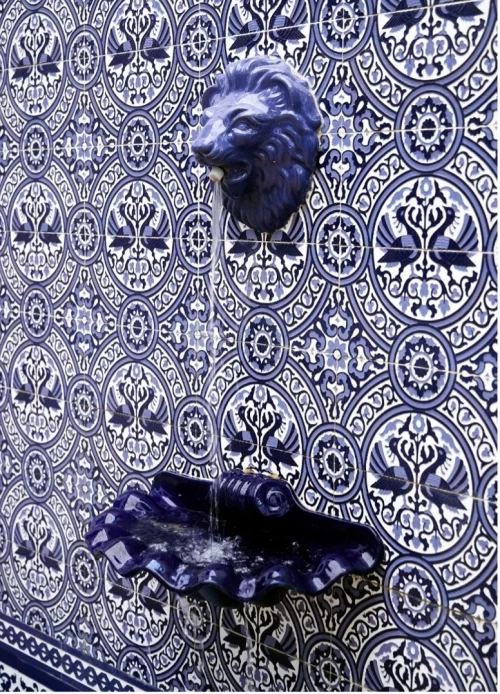
It is an old 17th-century palace with two floors, featuring numerous archaeological remains that attest to the nobility of its construction. Throughout the building, there are intricately carved beams, and the main courtyard is supported by marble columns, with a sealed well at its center. The house still preserves, albeit unused, the old communal washhouses.
Over the course of its history, it has lost its original purpose and has been converted into a residential house or courtyard for neighbors. Legend has it that its foundation is linked to the Chief Inquisitor Tomás de Torquemada (from whom the name “Quemá” could derive). The connection to the Inquisition is possible, given the proximity of its headquarters in the Castillo de San Jorge.
Patio de las Flores (Castilla, 16)
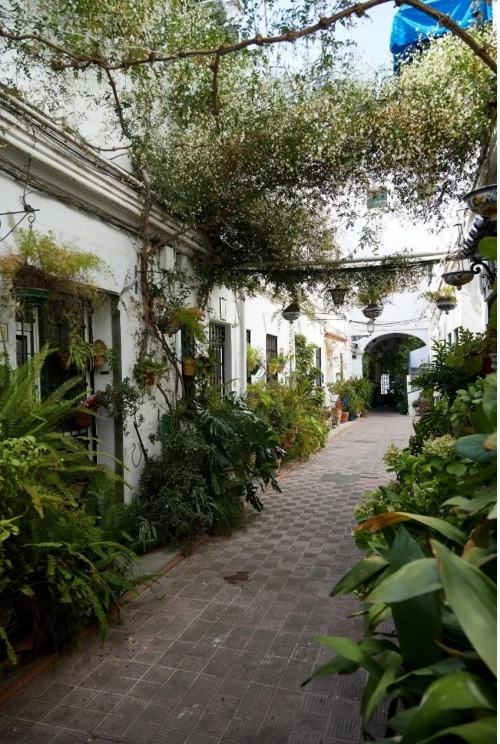
It’s an authentic corral with prominent ceramic altarpieces and Triana-style tiles. It has been completely restored and has the particularity of its rear part facing the Paseo de la O, on the right bank of the Guadalquivir River.
Built in 1903, it is one of the oldest courtyards in the city of Seville and one of the few that still exist today. Strolling along the popular Castilla Street, in the heart of the Triana neighborhood, and coming across a courtyard like this is a true gem.
This is an interesting and complex courtyard, notable for its decoration with flower pots in the courtyards, walls, and windows. It has a very spacious entrance hall, and after several turns, the corridor that opens to the houses leads to a courtyard with views of the river and the Isabel II Bridge. Originally, it had only one floor, but a considerable part of the building now has two.
Inside, you can find a well and washhouses. It has received numerous awards and has served as a backdrop for films with a Sevillian folkloric theme. It is one of the most well-known courtyards in Triana.
Patio de Quidiello (Castilla, 51)
Initially, it housed a few families, and later it became the old Quidiello chair factory. Today, more than 20 families live here, embracing the traditional way of life of these courtyards, sharing moments, and collaborating in the maintenance of the building.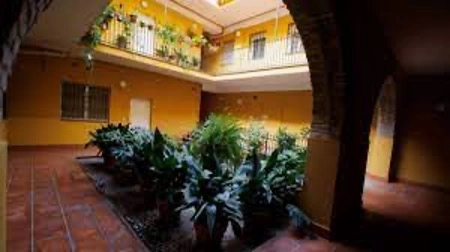
Corral de los Fideos (Castilla, 58)
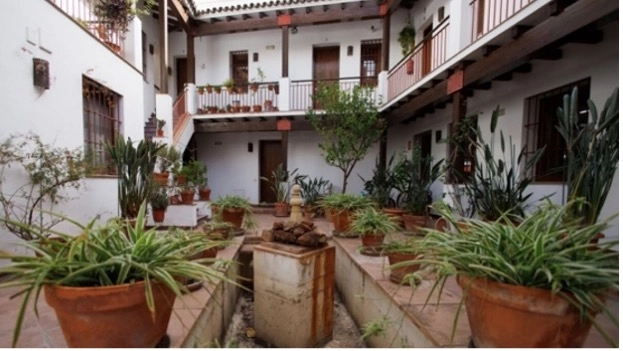
In the 16th century, it housed the Hospital of Santa María de las Cuevas, which was created by the Carthusian monks for abandoned or marginalized individuals in the society of that time. It was here that the Black community of Triana held their gatherings, which were the origin of the Hermandad del Patrocinio (Brotherhood of the Patronage).
After the hospital disappeared, the building was used as a residence, and from 1850 to 1900, a factory for fine pasta for soups was established there. It is said that the sloping floors of the upper rooms towards the exterior were used to drain the manufactured pasta. Hence, the name “fideos” (noodles).
Triana Hotel (Clara Jesús Montero, 28)
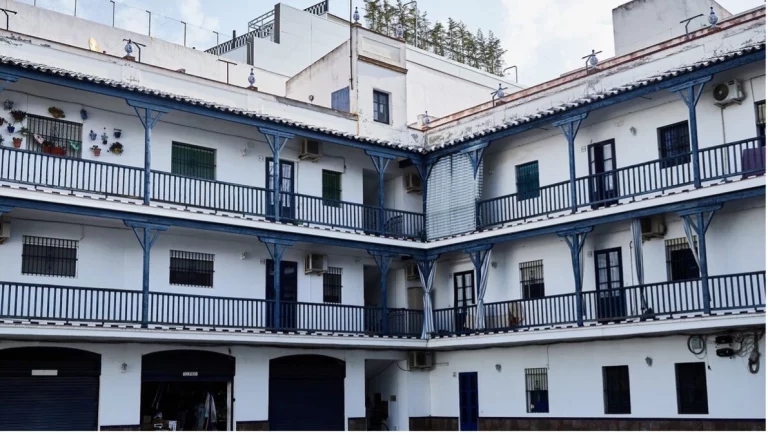
An old three-story hotel built for the Ibero-American Exposition of 1929, later converted into a residential courtyard. It has a U-shaped structure and belongs to the City of Seville. In the 1980s, it underwent a rehabilitation process with a priority of providing housing for traditional Triana residents.
In its courtyard, musical and artistic events are organized regularly. Numerous editions of the Flamenco Biennial, the Corral de Comedias, and the proclamations of the traditional Velá de Santiago and Señá Santa Ana have taken place here.


